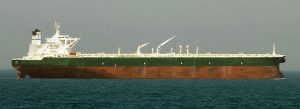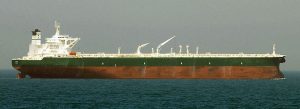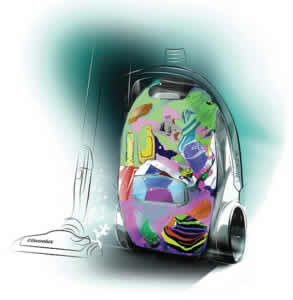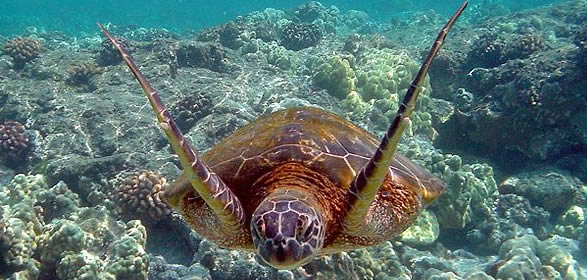Category Archives: Environmental
Trial run of “superskimmer” A Whale Not Conclusive.

The trials of A Whale, which were held just to the north of the BP Plc, were supposed to have been wrapped up by Monday, however they have now been extended due to the adverse weather.
Bob Grantham, spokesman for TMT, explained “After an initial 48-hour testing period results remain inconclusive in light of the rough sea state we are encountering. Therefore, working in close coordination with the U.S. Coast Guard, we will be undertaking an additional testing period to make operational and technological adjustments aimed at improving skimming effectiveness given the actual conditions we are encountering in the Gulf.”
A Whale wasn’t the only vessel having difficulties. According to Mr. Grantham, a lot of the smaller skimmers were also having difficulty carrying out there task in the adverse conditions caused by Hurricane Alex, which passed through the Gulf of Mexico last week.
A Whale is seen as the potential “Hail Mary” for the efforts in trying to clean up the Gulf of Mexico as it can collect up to 500,000 barrels of oil per day of oily water, which is why the outcome of this trial is so disappointing.
There will be another trial run, and TMT is hoping that this one will go as planned, so that they may secure a contract with BP to skim oil from the gulf. They are prepping to more “super skimmers” so there may just be hope for the Gulf of Mexico yet.
New, Gigantic Oil Skimmer Help Out in Gulf of Mexico
The cleanup crews working around the clock in the Gulf of Mexico to clean up the BP oil disaster may receive a reprieve if all goes well if the weekend tests of a new oil skimmer go according to plan.
This Taiwanese oil skimmer has been aptly dubbed “A Whale”, as it consists of 12 vents which are designed to collect up to 500,000 barrels of oily water a day. This “Whale” is described as being one of the biggest oil skimmers in the entire world, and has been showing off its capabilities since last Saturday. It is being tested just north of the Macondo Deepwater well.
The oil skimmer was set to cruise a 25-square-mile test site, through to yesterday. TMT shipping is credited with the creation, turning an out of service oil tanker into the oil skimming monster
The jury is still out however, and the U.S. Coast Guard, along with BP, are holding their collective breaths will live up to the claims, and be able to clean up to 21 million gallons of oily water a day. By all means it should live up to the claims, it is 10 stories high, is as long as four city blocks, and has 12 vents to separate the oil from the contaminated water, and re-pump it back into the Gulf of Mexico.
Bob Grantham, spokesman for TMT, had this to say in an e-mail “In many ways, the ship collects water like an actual whale and pumps internally like a human heart.”
A Whale is being put to the test close to the epicenter of the disaster as officials believe that it will be more effective on those areas where the oil is at its thickest, rather than where the oil is thinner, closer to the shoreline.
The monster oil skimmer made an appearance in the Gulf of Mexico on Wednesday, however officials have been holding off on its use, until its capabilities have been tested, and the federal Environmental Protection Agency has a chance to confirm that the water it will be pumping back into the Gulf of Mexico is truly clean and properly processed. While it won’t get rid of all of the oil, there are still certain standards it needs to meet before it can be put to work.
The long wait time has really frustrated some of the local officials on the scene, as this giant oil skimmer might just be the ticket to preventing the oil from making its ways to the vulnerable coastlines.
Governor Bobby Jindal is one of those officials that is tired of waiting to get A Whale into the game, “They’ve used the war rhetoric, if this is really a war, they need to be using every resource that makes sense to fight this oil before it comes to our coast.”
Let us hope that A Whale performs as promised, and we can finally make a dent in this humongous problem which faces the Gulf of Mexico.
Controversial Dolphin Hunting Documentary, “The Cove”, makes debut in Japan
Tokyo (AP) – “The Cove”, an award winning documentary which exposes a Japanese village engaging in the acts of hunting down and killing dolphins, has finally made its debut on Saturday after being delayed by angry nationalist protests.
Of the six cinemas which started showing the film, a small number completely sold out, and the others were just plain empty. Another 18 cinemas are scheduled to show the film at a later time.
At a popular art theater in Tokyo, Image Forum, somewhere in the neighborhood of 30 protesters were seen brandishing Japanese flags, and were shouting out slogans against the film. The police were seen trying to stop shoving matches between the protesters and the small group of supporters for the film.
The film goers didn’t seem to take notice, and weren’t the least bit reluctant to go and see the film, as the first two showings at the theater were completely sold out.
One movie goer, Tomokazu Toshinai, had this to say about the film, “I didn’t know about dolphin hunting. Whether it’s TV or movies, Japanese have a right to know these things.”
In the last month, three other theaters which were scheduled to show the film canceled the showings, after some rather intense protests and telephone campaign against the documentary. The Nationalist groups are saying that the United States produced film is Anti-Japanese, has no bearing on reality, and is in cahoots with a militant anti-whaling organization.
“Nothing Sucks Like An Electrolux”
Electrolux Launching new “Vac from the Sea” Initiative:
Stockholm, Sweden – It is a well known fact that the Pacific Ocean is chock full of garbage, so much in fact that there are actually “islands” which are comprised entirely of it. Electrolux has the intention of gathering up the plastic out of the worlds’ oceans, and converting it into brand new vacuum cleaners. This initiative, is known as “Vac from the sea”, has taken on the goal of bringing attention to the issue of plastic pollution in the Pacific Ocean, while at the same time combating the problem of the scarcity of recycled plastics which are needed to create sustainable home goods.
The Vice President of Floor Care Environmental and Sustainability Affairs at Electrolux, Cecilia Nord, enlightens us on the plans over at Electrolux, “There are plastic islands, some several times the size of the state of Texas, floating in our oceans. Yet on land, we struggle to get hold of enough recycled plastics to meet the demand for sustainable vacuum cleaners. What the world needs now is a better plastic karma”
The general plan is to create a limited quantity of “green” vacuum cleaners from the plastic debris which is being collected from the Pacific, Indian, and Atlantic oceans, as well as the Mediteranean, Baltic and North seas. Anyone who is interested in the project can follow its progress on the Blog as well as on Facebook and can also find full details on how to become involved, should they wish to do so. These “green” vacuum cleaners are set to be put on display, in order to drum up support for the project.
We at AC tropical fish applaud the idea for its great symbolic value!!
Gulf Oil May be Making its way Into Estuary Food Chains
HATTIESBURG, Mississippi – The scientists over at the University of Southern Mississippi, in conjunction with the Tulane University, have found what appears to be oil in the postlarva of blue crabs, which are making their way into the coastal marshes along the coast of the Gulf of Mexico, which may indicate that oil may just be finding its way into estuarine food chains.
The director of the Center for Fisheries Research and Development at the Gulf Cost Research Laboratory (GCRL), Harriet Perry, has discovered traces of hydrocarbons (or we can call it oil), in fiddler crab, and blue crab larva. Perry has indicated that the oil found seems to be stuck in between their hard outer shells, and their inner skins.
Perry had this to say when questioned further, “I’ve been sampling in Mississippi coastal waters for 42 years and I have never seen this, my guess is that the crab picked up this oil offshore while in the megalopal (postlarval) stage and brought the oil with it when it came back to the marsh.”
Dr. Caz Taylor, a researcher at Tulane University, has recently discovered orange-colored droplets in megalopae as far eat as Pensacola Florida, and as far west as Rockefeller Wildlife Refuge in Louisiana, but he has not yet completed the analysis to determine the composition of these droplets.
There have been samples sent to an independent research lab in Florida, which has confirmed that there are hydrocarbons present. While no direct link has been made between the Deepwater Horizon oil spill, there is enough circumstantial evidence to warrant further probing.
BP Facing Lawsuit to Stop Burning Sea Turtles
– BP is in some very hot water over their practice of burning sea turtles, while trying to clean up their mess in the Gulf of Mexico. The initiative is being headed by the Center for Biological Diversity and the Turtle Island Restoration Network.
They officially notified the U.S. Coast Guard and BP of their intent to launch a lawsuit for them to stop burning endangered sea turtles alive, and have given an ultimatum of 60 days in order to do so. If the action is not stopped a lawsuit will be filed under the Endangered Species Act.
Todd Steiner, biologist and executive director of the Turtle Island Restoration Network has this to say on the subject “BP is burning turtles alive and it is cruel, heartless and a crime we can’t and won’t allow to continue, sea turtles were critically endangered before BP created America’s worst environmental catastrophe, and every effort possible must be taken to rescue endangered turtles from this oil spill. BP needs to reverse course and help double our efforts to rescue sea turtles, not prevent their recovery.”
The spill really did happen at an inopportune time, as the rare Kemp’s ridley sea turtles started to nest in the Gulf of Mexico.
BP wound up in this mess, as they started a burning process, as they didn’t allow enough time for rescue boats to make a search, and get the sea turtles out of harms way.
Animal Lovers Rejoice! Historic Shark Fin Ban!
On July 1st, Hawaii became the first government in the world to institute a law to ban the sale, distribution and even possession of shark fins, the news is sending ripples all around the globe, and animal advocates everywhere are cheering, and ramping up their efforts to get their governments to do the same.
This new law means that restaurants in Hawaii will not be able to serve shark fin soup, a real delicacy, but the implications are so much greater than a few items on a lunch menu.
The shark has made the jump from predator and food source, to being protected. The new law instituted in Hawaii is aiming to prevent shark finning, a rather gruesome process where, once caught, the fins are removed from the shark, and the rest of it is thrown back overboard.
State Senator, Clayton Hee had this to say about the momentous occasion, “As far as I’m concerned it’s no different than killing an elephant for its tusks or de-horning a rhinoceros for its horn. These are cruel and inhumane practices that have no business in a civilized world”.
It was Senator Hee, with the support of many animal rights advocates, which managed to drum up the votes to make it illegal to have, serve, buy, or sell shark fins.
Other States, such as California, are starting to jump on the band wagon, and even other countries are talking about creating similar laws.
Not surprisingly, China is where a lot of the efforts are being made. WildAid launched a campaign in China using NBA superstar Yao Ming, to get people to stop buying shark fins, and stop eating shark fin soup.
Laws Preventing Skimmers from aiding in BP Spill!
Washington, June 30th – Officials are saying that the laws in place in the U.S. Have made it nigh impossible to get skimmers to the Gulf of Mexico in order to aid in sweeping up the oil which is gushing away madly from the Deepwater Horizon spill. This catastrophe is beyond scope, and something really needs to be done about it, however, it has been mentioned that the current legislation simply does not allow for it..
BP has stated that only 433 boats are actually sweeping up the oil, and that only about one tird of those are specially designed skimmers, making the job at hand a lot more difficult.
While the spill in the Gulf of Mexico is the largest spill in all of U.S. History, however it does not invalidate the Jones Act of 1992. The Jones Act of 1992 protects U.S. Shipping, and it also forced a French company to sell nine skimmers to a U.S. Company before they could be allowed to aid in the cleanup process. Many people are in an uproar over this fact, as the Jones Act only covers business interests, and does not allow any contingencies for matters of national emergency, which the BP oil spill in the Gulf of Mexico certainly falls under. There has been no mention if there may be an acceptance added, or any change at all made, in order to allow international skimmers to come in and aid in the cleanup process.
If that weren’t enough, the Oil Pollution Act of 1990, which states that skimmers need to be on standby in ports all around the country in case of emergency, are making the job of actually getting the skimmers to where need to be, quite a troublesome endeavor. There has been no motion in getting these skimmers moved, which has led a lot of people to wonder if the U.S. Really wants to get the BP oil spill in the Gulf of Mexico cleaned up at all. The reasoning is that if there is another catastrophe in another port, those skimmers need to be on standby, in order to respond quickly and efficiently to deal with the issue. This unfortunately, leaves the workers and cleanup crew currently working feverishly to clean up this horrendous mess completely and utterly on their own for the time being.
What makes this situation so frustrating, is that when one looks at a Coast Guard map, as U.S. Senator George LeMieux pointed out, there are 850 skimmers in the southeast and 1,600 nationwide, sitting in their docks not doing anything. “We are literally talking about more than a thousand skimmers that are available, but we only have 400 — if this number is correct — at work,” LeMieux said. “It is hard to believe that the response is this anemic; it is hard to believe that there is this lack of urgency or sense of purpose in getting this done.”
Fears are Confirmed… Whale Sharks Can’t Avoid BP Oil Spill
In the past week, scientists have been cheering at their discovery of what appears to be one of the biggest whale shark groups ever seen in the northern Gulf of Mexico. There were 100 of the amazing creatures feeding on the surface over a deepwater feature known as Ewing Bank, which is located off of Louisiana.
However their cheering was short lived as one of their worst fears was confirmed… They are not avoiding the spill area. Eric Hoffmayer, a scientist with the University of Southern Mississippi, had this to say on the subject, “Our worst fears are realized. They are not avoiding the spill area, those animals are going to succumb. Taking mouthfuls of oil is not good. It is not the toxicity that will kill them. It’s that oil is going to be sticking to their gills and everything else.”
Whale sharks are the largest fish on the planet. They feed by filtering plankton and other tiny sea animals from the water through a colander like feature in their mouths. As mentioned before, it is not the ingestion of the oil that is the major problem, although it is not healthy for the Whale sharks.
“Based on all the information I’m getting, they are doing the normal things regardless of the oil. The idea that sharks have these evolved senses that will protect them — well, they haven’t evolved to detect oil,” Hoffmayer said.
Hoffmayer had been tagging Whale sharks on the Ewing Bank in June of last year. The trackers he managed to get onto the whale sharks showed that some of the animals spent July making their way hundreds of miles toward the coast of Alabama and the Florida Panhandle. If they follow the same pattern this year, it will put them smack dab in the middle of the oil spill.
Not a lot is known about the migratory patterns of the whale shark, and they are not sure exactly how many of them make their home in the Gulf of Mexico.
The best way to get a handle on their comings and goings of the whale shark is by utilizing photographs of the spots and the bars on their sides. These patterns are as unique to the whale sharks as fingerprints are to us.
Hoffmayer has warned that the implications are far more grand than they appear to be.. “Last year we had two sighted off Florida and Alabama that were from Honduras and Belize,” Hoffmayer said. “That means these oil impacts are not only for the Gulf population, but for the Caribbean and maybe even further. The implications are pretty big here.”
He also said that the relatively high temperatures in the Gulf of Mexico, and the position of the offshore Loop Current, signifies that the environmental conditions in the Gulf this year, are extremely similar to the conditions which drew the whale sharks to the same area last year.
This all adds up to big trouble for the poor whale shark.. one can only hope a solution is found quickly.
Out of Site Out Of Mind: Dispersants Covering Up Damage in Gulf
As if the Gulf of Mexico didn’t have enough problems, what with the oil slicks and tar balls, the dispersant being used to clean up the mess, may be having an adverse effect on the local marine life.
Ben Raines, an environmental reporter for the Mobile Press-Register, has been shooting video of some pretty strange going ons in the Gulf. It is widely believed that the dispersant are the root of the trouble, rather than the oil spill itself.
Ben Raines counted out over 20 sharks swimming around his tiny vessel, in 6 feet of water located off the Bon Secour National Wildlife Refuge. He managed to capture the silhouettes from above the water. They were so immense in number that he stuck his camera under the water for a better view, and a bunch came into focus.
Ben proceeded to film from the beach out. An incredible number of tiny fish swept by in the shallows; literally tens of hundreds anchovies could be seen piled up, their lifeless bodies splayed on the sand.
There was a shark within 100 yards, and that is just not normal. Raines is not alone in his observation of the odd shark behavior. In the past month, beach goers in Florida were shocked to find an 11 foot, 800 pound tiger shark, close to shore, swimming in the surf. The shark was acting as if exposed to oil.
This wasn’t the only shark to exhibit this odd behavior, researchers have taken note of at least two dozen deep water sharks have been discovered within six miles of the shore, far closer than normal.
It isn’t just sharks which are exhibiting this behavior but all manners of marine life are also acting off.
The reason for this has been boiled down to the dissolved oxygen pockets which are developing all over the Gulf. It is thought that it’s not just the oil that is causing this, but also the 1.5 million gallons of dispersant which BP has used to try and clear up the mess.
The reason for this is that the bacteria which break up the oil need oxygen. These bacteria take the oxygen from their surroundings, and this causes the marine life to leave the area. If they can’t leave they just die, and this is bad because then the bacteria need even more oxygen to complete the cycle and break down the decaying sea life.
There have been many arguments that P didn’t have to use dispersant in order to clean up the spill. Many people feel that there are better ways, such as burning it, skimming it, or any other multitude of ways.
It is unclear why an alternative method for cleaning up the spill, however it is quite clear that in attempting to clean up the spill using dispersant, they haven’t really helped the matter, but rather compounded it. Sure they were taking care of the problem on the surface, but not below it.. Lending credence to the saying “Out of sight.. Out of mind…”





